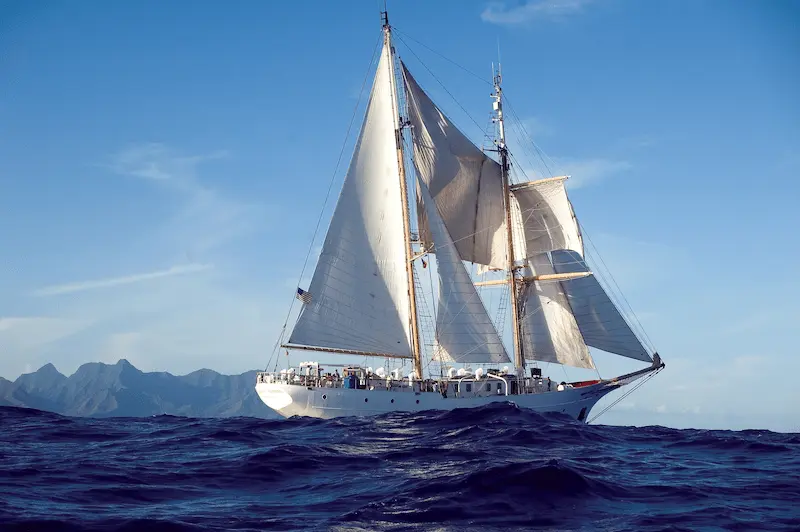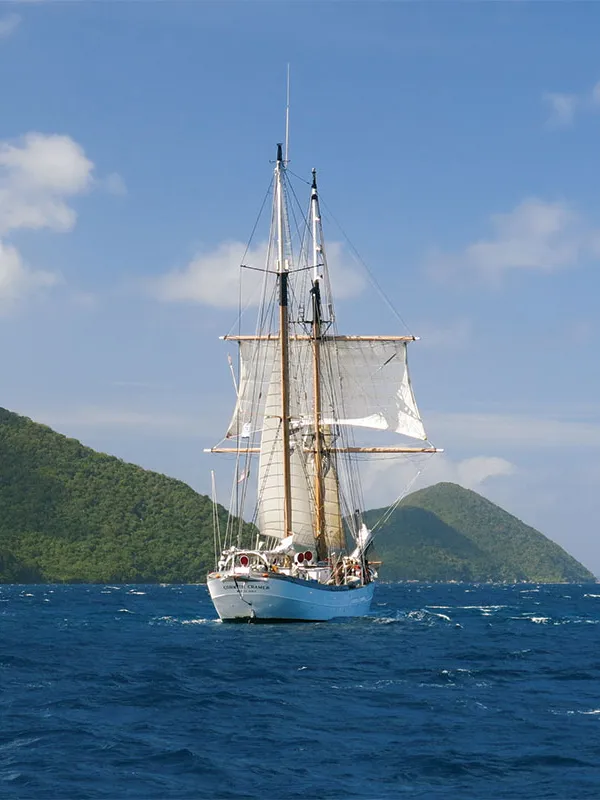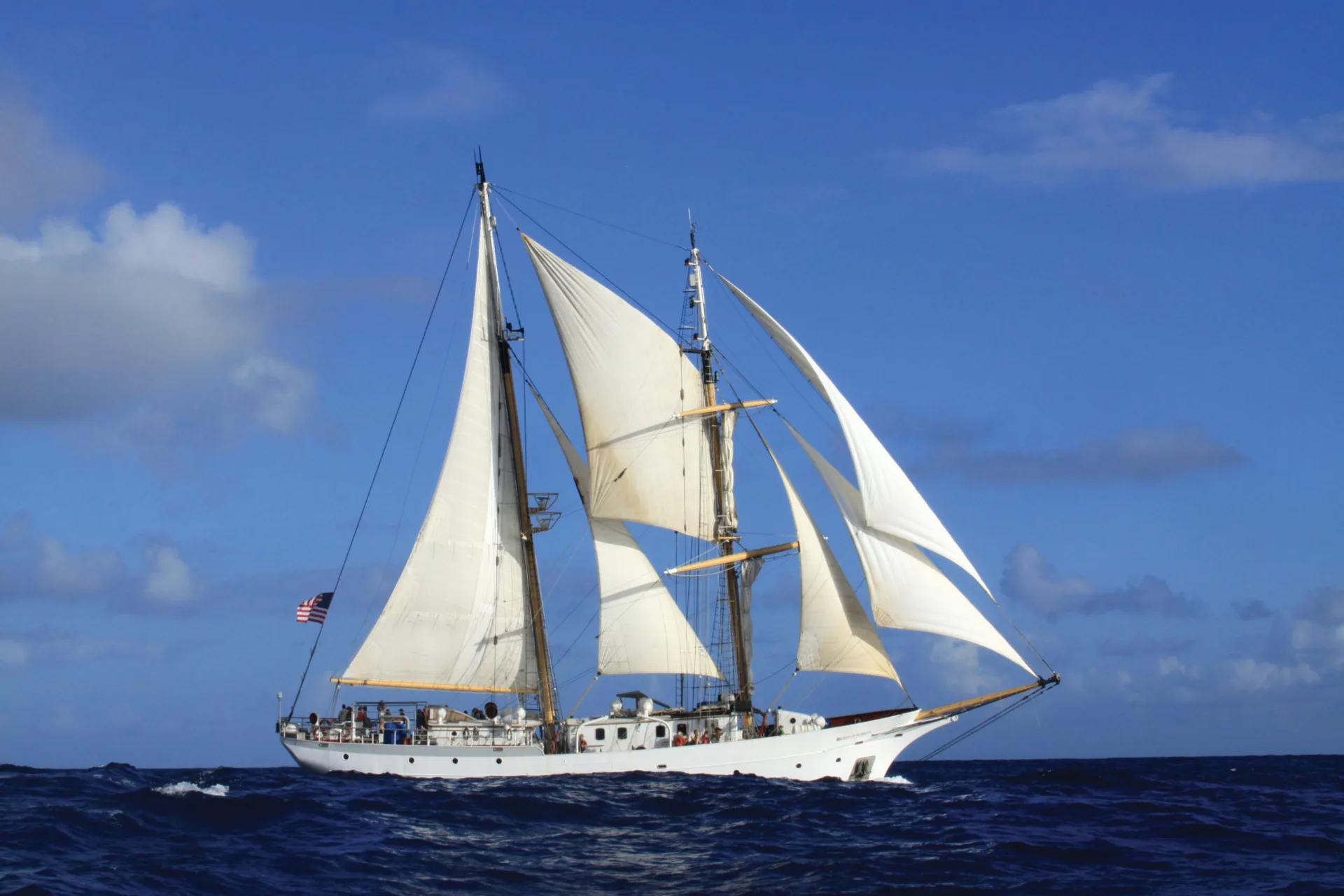
SSV Robert C Seamans
SEA’s newest vessel was designed by Laurent Giles of Hampshire England, and built at JM Martinac shipbuilding in Tacoma, Washington. Named after former trustee and Chairman of SEA’s board, the Robert C. Seamans is a 134-foot steel brigantine and is the most sophisticated oceanographic research/sailing school vessel ever built in the United States. Improvements in design and equipment, including a wet/dry laboratory and larger library, classroom, and computer laboratory, enhance the SEA academic program.
SEA vessels fly the United States flag and are inspected and certified by the United States Coast Guard as Sailing School Vessels (SSV), as defined under 46 CFR Subchapter R. Sailing School Vessels are required to meet stringent safety standards that differ from those of a passenger vessel on a comparable route. All SEA vessels meet or exceed the safety requirements for their class.
Owner and Operator
Sea Education Association
P.O. Box 6, Woods Hole, MA
Displacement
350 Tons
Construction
Steel; built 2001 J.M. Martinac Shipbuilding, Tacoma, WA
Length Overall
134.5 feet / 41 meters
Length on Deck
111.4 feet / 34 meters
Draft
13.9 feet
Beam
25.5 feet
Sail Area
8554 sq. ft. / 795 sq. m.
Auxiliary Engine
455 horsepower Caterpillar diesel
Complement
40 persons
Area of Operation
Pacific Ocean
Classification
American Bureau of Shipping A1 and A
Rig
Brigantine
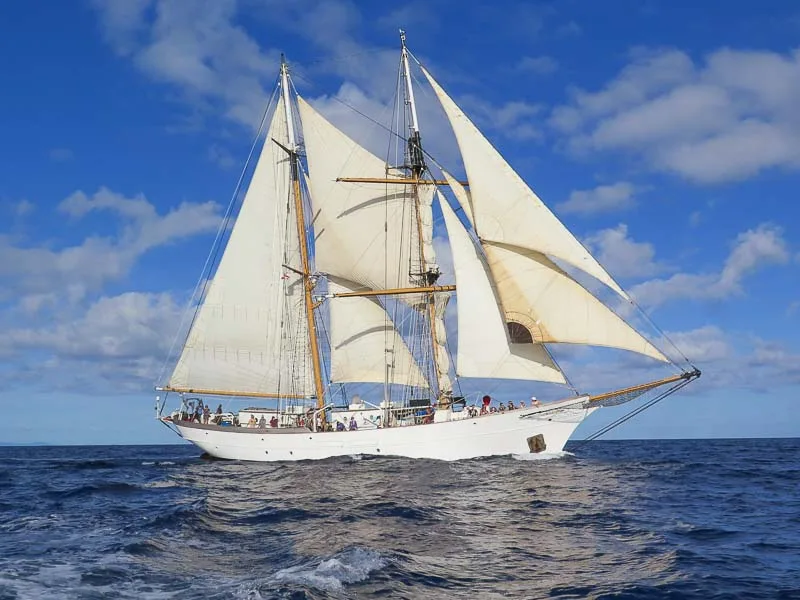
SSV Corwith Cramer
Corwith Cramer, named after SEA’s founding director, was designed by Wooden and Marean specifically for SEA and was constructed by ASTACE Shipyard in 1987 in Bilbao, Spain. She is a 134-foot steel brigantine built as a research vessel for operation under sail. The qualities that made our original vessel R/V Westward both versatile and seaworthy were incorporated into the design of SSV Corwith Cramer.
SEA vessels fly the United States flag and are inspected and certified by the United States Coast Guard as Sailing School Vessels (SSV), as defined under 46 CFR Subchapter R. Sailing School Vessels are required to meet stringent safety standards that differ from those of a passenger vessel on a comparable route. All SEA vessels meet or exceed the safety requirements for their class.
Owner and Operator
Sea Education Association
P.O. Box 6, Woods Hole, MA
Displacement
280 Tons
Construction
built 1987 ASTACE Shipyard Bilbao, Spain
Length Overall
134 feet / 40.8 meters
Length on Deck
98 feet / 29.8 meters
Draft
12.5 feet
Beam
26 feet
Sail Area
7,500 sq. ft. / 697 sq. m.
Auxiliary Engine
500 horsepower Cummins diesell
Complement
38 persons
Area of Operation
Atlantic Ocean
Classification
United States Coast Guard, Subchapter R
Rig
Brigantine
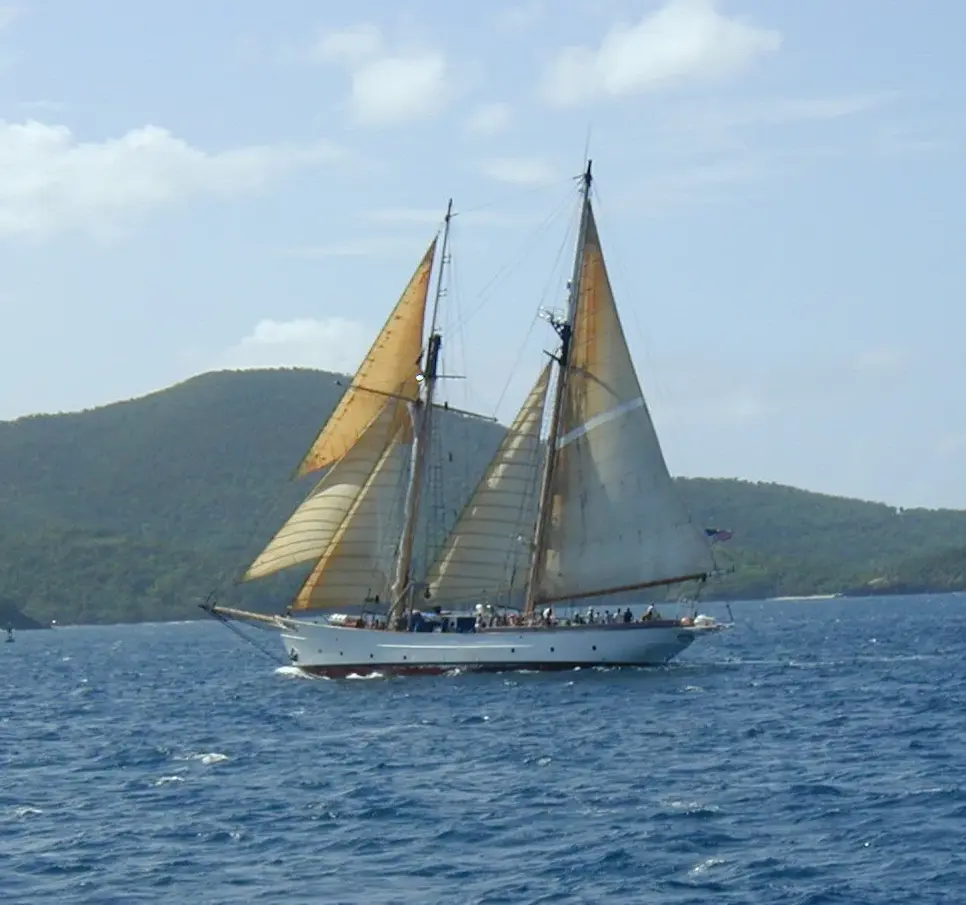
RV Westward
The ship was originally launched in 1961 as a private yacht designed for circumnavigating the globe before being refitted to serve as SEA’s first sailing research vessel (R/V).
September 1971 – The sailing vessel Westward is purchased by SEA.
The R/V Westward sailed her first SEA program from January to March 1972. Class W-1, was a 9-week program entirely at sea. Students and crew set sail in early January from San Diego, California, and arrive in San Juan, Puerto Rico in early March after transiting the Panama Canal and making stops in Socorro Island, Mexico and the Galapagos, Ecuador.
R/V Westward moved its homeport from Boston to Woods Hole, along with the SEA headquarters in 1982.
The R/V Westward was reclassified in 1986 when the Coast Guard classification for Sailing School Vessel (SSV) is ratified by Congress with strong leadership from the faculty and staff at SEA.
The SSV Westward is sold to Ocean Classroom Foundation in 2002.
